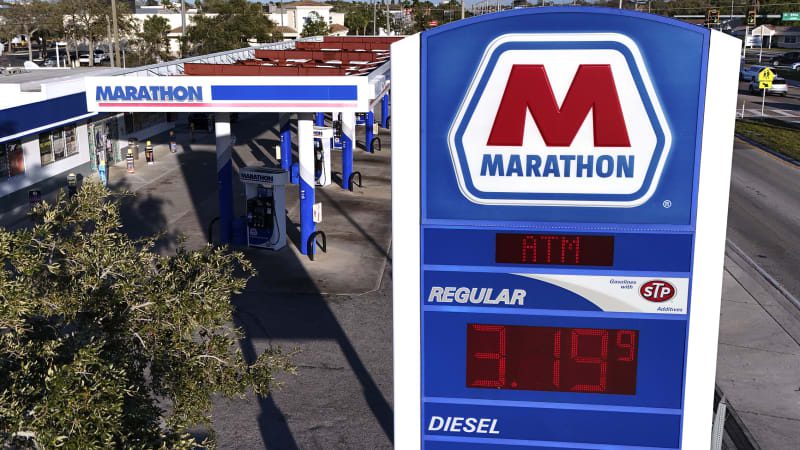Gas prices: National average jumps to 2-month high

Gas prices in the U.S. are steadily rising again, leaving prospects of a $3 national average in the rearview mirror. As of Feb. 15, the national average gas price stood at $3.28 per gallon, up $0.12 from a week ago, according to AAA data.
A shutdown at the large refinery in Indiana that normally processes 435,000 barrels of crude per day has impacted prices in the Midwest and pushed up the national average.
Higher oil prices and recent drawdowns in gasoline stockpiles have also put upward pressure on fuel costs for drivers across the U.S.
While the national average is still about $0.14 lower than a year ago, some states have have seen outsized upward movements recently. Prices at the pump jumped an average of $0.19 or more over the past week in New Mexico, West Virginia, Colorado, Maryland, Virginia, and Illinois.
The markets with the most expensive gasoline include Hawaii at $4.70 per gallon followed by California at $4.65 per gallon.
“We are in that time of year where pump prices begin to heat up, usually peaking around July,” AAA spokesperson Andrew Gross said recently.
“But unless something shocks the global oil market and causes prices to spike, the national average for a gallon of gas will probably stagger higher, with some flat days or even small price dips along the way.”
The gasoline national average had been in a downward trend from its September 2023 peak of $3.88 per gallon. About a month ago, the average pump price hovered near a one-year low of $3.07. The last time the national average gas price fell below $3 was in May 2021.
Read more: The best cash-back credit card for gas stations for February 2024

What determines the price of gas?
More than half of the price consumers pay at the pump comes from crude oil, according to the Energy Information Administration (EIA).
Oil demand and the production targets set by the largest oil producers, including the Organization of Petroleum Exporting Countries (OPEC) and its allies (OPEC+), play an important role in gas price fluctuations.

Gas prices have climbed higher as crude oil prices surged in recent weeks.
Crude oil futures for West Texas Intermediate (CL=F) closed above $78 per barrel on Feb 15. Brent (BZ=F) , the international benchmark price, surpassed $82 per barrel. These moves partly reflect easing concerns of oversupply after the EIA lowered its U.S. production forecast for 2024.
Geopolitical risks have also put upward pressure on prices. Ongoing attacks against vessels in the Red Sea by the Houthis, an Iran-backed rebel group, have become a wild card for oil prices in 2024. The attacks by Houthi rebels have prompted energy and shipment companies to avoid the Red Sea region that connects to the Suez Canal, a critical pathway between Asia and Europe.
Tensions in the Middle East have only escalated over the past month as the U.S. and UK conducted retaliatory strikes against Houthi-controlled areas in Yemen, Israel rejected a Hamas ceasefire proposal, and the U.S. killed the commander of an Iran-backed militia following a deadly attack on an American military base.
At the same time, crude oil prices aren’t the only factor driving gas prices. Seasonality, refining capacity, and distribution also influence prices.
In January, gasoline inventories surged to the highest level in a year, according to the EIA, but have since come down as demand for gasoline increased. February snowstorms and cold weather during the seasonally slow winter season, however, could still impact driving habits in the coming weeks.
State and federal gas taxes also contribute to the overall cost of filling up. In California, the state with the highest gas tax, taxes add up to $0.51 of the overall price per gallon, while drivers in Alaska pay just $0.09 per gallon.
Furthermore, gas prices act as a barometer for how consumers feel about the economy, factor into elections, and contribute to the larger inflation story that prompted the Federal Reserve’s latest interest rate hike campaign.

Click here for in-depth analysis of the latest stock market news and events moving stock prices.
Read the latest financial and business news from Yahoo Finance



